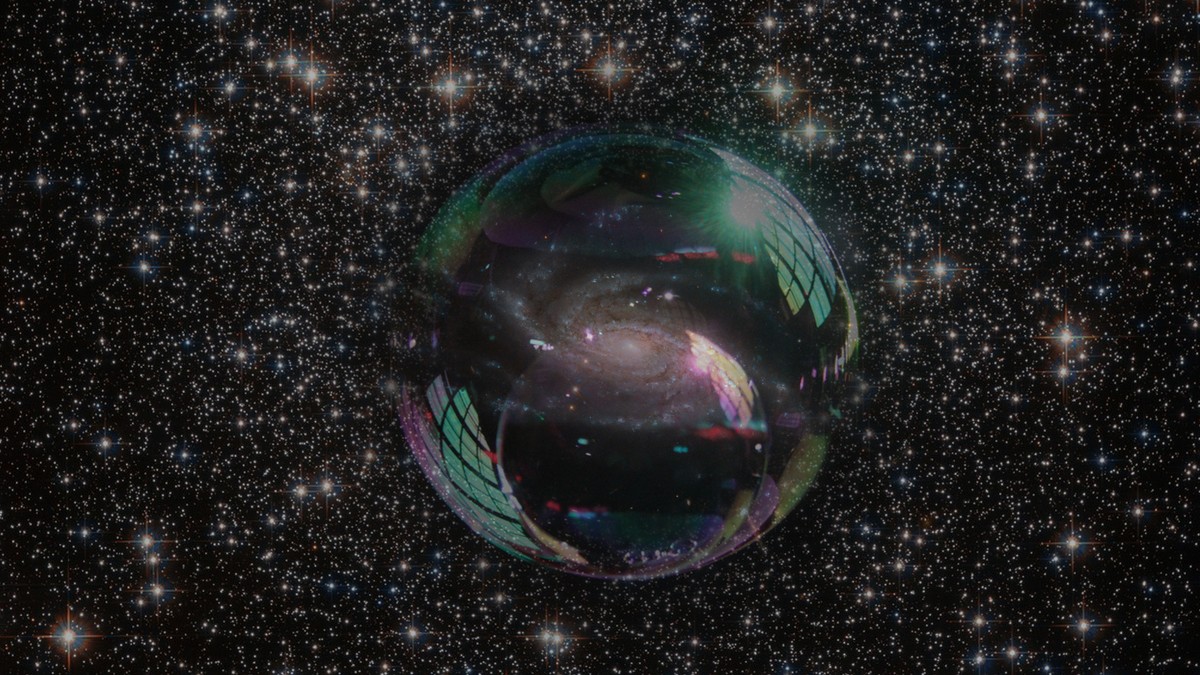
This article originally appeared on VICE US.
From our vantage point here on Earth, the universe can seem like a relatively calm and static place. But astronomical observations over the past century have revealed that this giant thing we live in, whatever it may be, is mysteriously expanding at an ever-accelerating pace.
Not only is the universe ballooning—a perplexing reality by itself—but scientists have also struggled for years to reconcile different estimates of the expansion rate of our cosmic borders.
This rate is known as the Hubble constant (H0), named after astronomer Edwin Hubble, and scientists think it is driven by mysterious phenomena called dark matter and energy.
For example, data obtained by European Space Agency’s Planck satellite clocks the constant at about 67.4 kilometers/second for every million parsecs (one parsec equals 3.26 light years). This result is based on measurements of the cosmic microwave background (CMB), the oldest observable light in the universe. But when scientists use distance measurements of supernovae that are substantially younger than the CMB, the result is a faster clip of 73.5 km/s/Mpc.
So what gives, universe?
One speculative answer may be that we are living in a local “Hubble bubble,” a gigantic area in space that is comparatively less dense than the rest of the universe, according to Lucas Lombriser, a theoretical physicist at the University of Geneva.
This hypothesis dates back more than two decades, but Lombriser built on previous research by constraining the possible dimensions and characteristics of this speculative bubble in a paper published in the April 2020 issue of Physics Letters B.
Lombriser argues that there is no need to invent new physics to explain the discrepancies between the two Hubble constants. The difference could stem from an overestimation of how dense our corner of the universe is relative to the average cosmic density of matter.
“We know that the universe nearby is highly inhomogeneous,” Lombriser explained in an email. “The densities of particles in the ground, in the atmosphere, or in the space between Earth and the Moon/Sun are very different.”
Even on much larger scales, these density variations can still occur. In his paper, Lombriser proposes that we might be located in a relatively empty region that stretches out along a radius of 40 megaparsecs (roughly 125 million light years) or a total diameter of 250 million light years.
“To create the local under-dense region assumed in my paper, we therefore do not need anything special,” Lombriser said. “Such regions are relatively frequent in the cosmos in the standard cosmological theory.”
If this bubble contains about half as much matter as the cosmic average, it might account for why we keep getting different results for the Hubble constant. Scientists have calculated the distances to supernovae in order to estimate the universe’s expansion rate, but those numbers may be slightly distorted if we have overestimated the amount of matter in our vicinity.
Since the value provided by the Planck satellite is based on observations of the CMB, a truly ancient source of radiation, it is a more reliable source of the overall expansion rate.
This is still a hypothesis, and it will take more models and observations to determine whether uneven distributions of matter throughout the universe could explain the tensions between the observed Hubble constants.
To that end, Lombriser is hopeful that novel fields such as gravitational wave astronomy, which measures ripples in the fabric of spacetime, could help resolve the mystery. In particular, he is interested in events such as GW170817, a gravitational wave detected on August 8, 2017, that was created by a neutron star collision. Scientists traced the wave signal back to a galaxy called NGC 4993, enabling them to also capture the light from the crash.
“This allowed us to not only know the distance to the event but also its redshift, which means that we can use this as a ‘Standard Siren’ that measures the expansion rate of the cosmos,” Lombriser said.
“So far, GW170817 is our only Standard Siren,” he added. “The emitter galaxy NGC 4993 lies in our local bubble, hence, the expansion rate should be expected to agree with the local measurement rather than with the global one.”
In other words, he predicts that gravitational waves from sources within the 40 megaparsec radius will generate a similar expansion rate to the one derived from supernovae, which could be a function of a relatively empty local environment.
Regardless of what new observations turn up, solving the discrepancies in these values will be essential to understanding the bizarre forces behind the universe’s widening borders. The good news is that we can now build on the insights of 20th century scientific luminaries, such as Hubble and Albert Einstein, with 21st century technologies like gravitational wave detectors and ultra-sensitive telescopes.
“More observations and surveys will help to improve these estimates, but also a better understanding of the distribution of dark matter will be required,” Lombriser said. “With more such gravitational wave events we should be able to reduce this uncertainty and get a better measurement of our local density.”
https://news.google.com/__i/rss/rd/articles/CBMia2h0dHBzOi8vd3d3LnZpY2UuY29tL2VuX2luL2FydGljbGUvNGFnYmpuL3dlLWFjdHVhbGx5LWxpdmUtaW5zaWRlLWEtaHVnZS1idWJibGUtaW4tc3BhY2UtcGh5c2ljaXN0LXByb3Bvc2Vz0gFvaHR0cHM6Ly93d3cudmljZS5jb20vYW1wL2VuX2luL2FydGljbGUvNGFnYmpuL3dlLWFjdHVhbGx5LWxpdmUtaW5zaWRlLWEtaHVnZS1idWJibGUtaW4tc3BhY2UtcGh5c2ljaXN0LXByb3Bvc2Vz?oc=5
2020-03-11 05:05:00Z
52780656393950
Tidak ada komentar:
Posting Komentar